You probably remember, and perhaps not so fondly, your mother telling you to eat your broccoli. If you’re anything like I am, you might even have slipped it to the dog under the table.
While you didn’t think anything about that, can your dog eat broccoli, and is it safe for him to do so? Before the next time you slip your dog broccoli or any other human food, let’s explore that question for broccoli and other veggies too.
Can Your Dog Eat Broccoli?
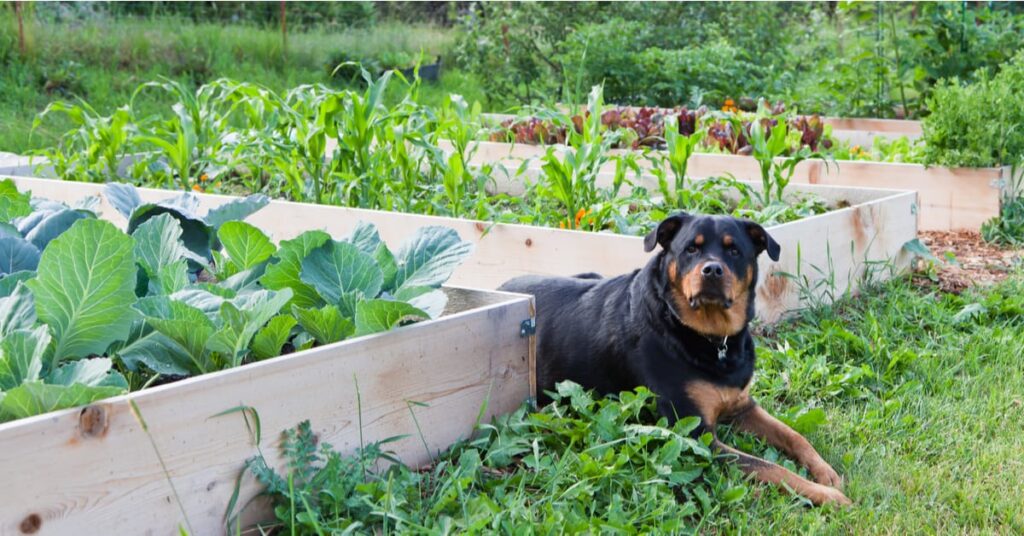
The quick answer here is yes, your dog can eat broccoli, but you don’t want to give him too much. It is safe for dogs to eat both raw or cooked broccoli but in small amounts.
The reason you don’t want to give him too much is that the florets of the broccoli plant contain isothiocyanates. Isothiocyanates are organic chemical compounds that are described by toxicologists using the term “hormesis.”
Hormesis means that these compounds have a ‘biphasic dose response’ to environmental agents.
That’s a mouthful, but what it means is that at low doses, they are beneficial and may even prevent cancer in your dog and you too (that’s why you should eat your broccoli). At high doses, however, they can have an inhibitory or toxic effect.
That’s why you want to only use small amounts if you’re including broccoli in your dog’s diet. Broccoli and other cruciferous vegetables — members of the cabbage family — have numerous health benefits.
What are the Health Benefits of Broccoli?
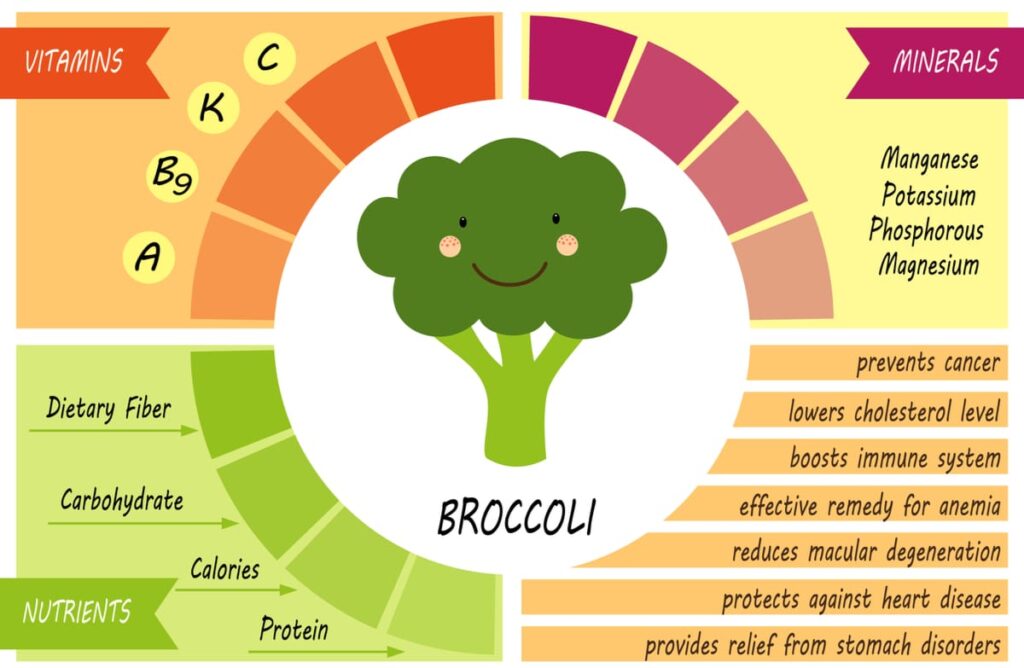
The broccoli florets and broccoli stalks have numerous health benefits. They contain all kinds of good vitamins, minerals, and antioxidants like:
- Vitamin A
- Vitamin C
- Vitamin K
- Potassium
- Calcium
- Magnesium
- Sodium
- Chromium
- Folic acid
- Sulforaphane
They contain vitamin A, vitamin C, vitamin K, fiber, and potassium, all of which are good for your dog. Broccoli is also a good source of calcium which is good for your dog’s bone density.
Additionally, broccoli contains sulforaphane, which is an antioxidant. Antioxidants reduce your cytokines, which makes them anti-inflammatory agents.
Moreover, the antioxidants give your dog’s immune system a boost which helps him fight off infections. Broccoli also contains other healthy minerals like magnesium, sodium, and chromium that strengthen your dog’s immune system and his nervous system too. Of course, broccoli is also low-fat so that’s another benefit of feeding your dog broccoli.
Finally, broccoli contains folic acid which is vital for maintaining healthy cells, particularly for pregnant dogs.
Clearly, there are a number of healthy ingredients that make broccoli good for dogs, but how much and what parts should you use if you feed broccoli to your dog?
Which Parts of Broccoli Should You Give Your Dog?
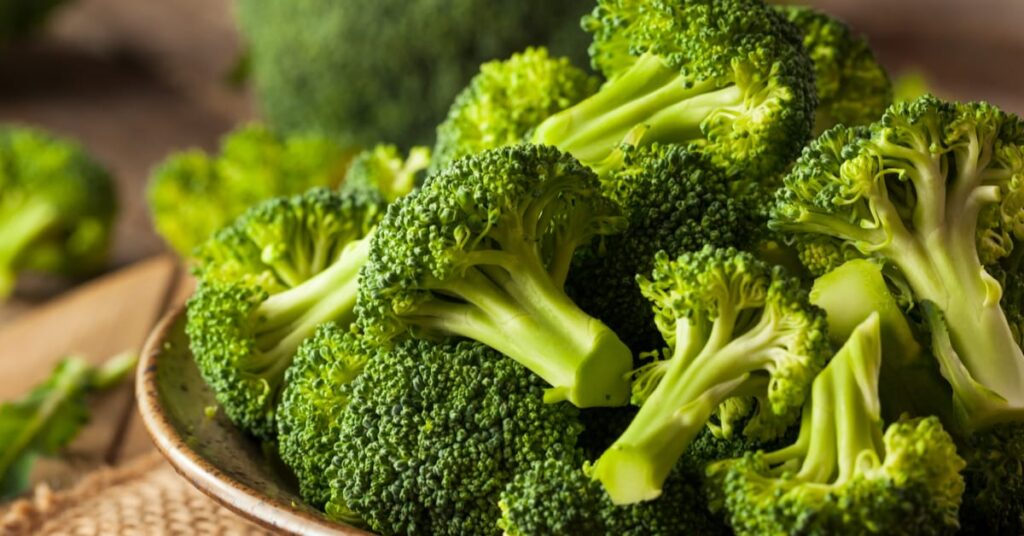
As mentioned, dogs can eat cooked or raw broccoli, just not in large amounts. Dogs don’t need a lot of veggies in their diet in general, but they do need some, and broccoli is a good one in small quantities. In fact, broccoli is even considered a superfood.
While small quantities can be nutritious for your dog, large amounts can cause digestive issues like mild to severe gastric irritation which can lead to stomach upset, nausea, gas, bloating, and diarrhea.
You can give your dog both the florets and broccoli stalks, the latter of which are very fibrous, but it’s wise to cut them up into small pieces since they can be a choking hazard. You might even want to puree the broccoli you give your dog to help reduce the choking risk. You also don’t want to use
What About the Broccoli Stem?
Many people will give their dog the broccoli stem as a chew toy or occasional treat thinking that if the rest of the broccoli is healthy, then the stem should be too. This is, unfortunately, not the case.
The stem contains a very high fiber content. The high fiber may be too much for your dog and can cause digestive issues as a result. Additionally, if you give it to a puppy, they often bite off a big piece and swallow it. It’s possible this could cause an intestinal blockage.
Additionally, your puppy’s digestive system is sensitive and requires specific nutrients for growth. For that reason, it’s recommended that dog owners don’t feed broccoli to puppies.
How Much Broccoli Can You Give Your Dog?
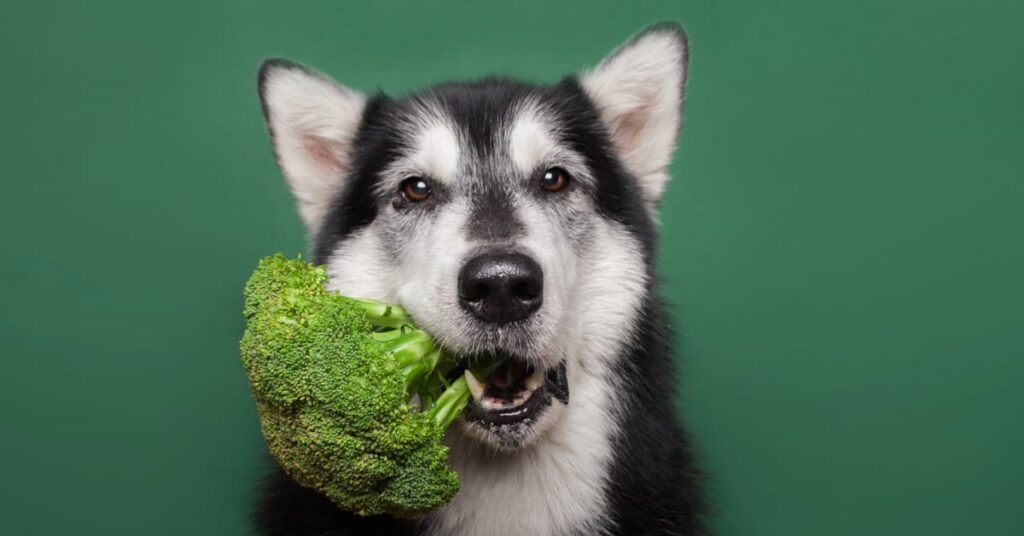
Portion control is very important when it comes to the broccoli in your dog’s diet.
Broccoli is considered toxic to your dog is it comprises 25 percent or more of his daily caloric intake. Ideally, you should only be around the 10 percent level for any veggies you are giving him.
If you go over that level, you risk stomach upset and some of the other side effects mentioned above. This is why it’s a good idea to use broccoli only as an occasional treat. That way your dog gets all the benefits of broccoli without any harmful side effects.
It’s also a good idea to start out by feeding just a small piece of broccoli and waiting to see if there are any negative reactions. Since no two dogs are the same, you can’ rely on what works for other dogs.
You also need to remember that puppies and older dogs have different nutritional needs. It’s better not to feed puppies broccoli; rather, wait until their body and digestive system mature before offering broccoli treats.
How Should You Prepare the Broccoli?
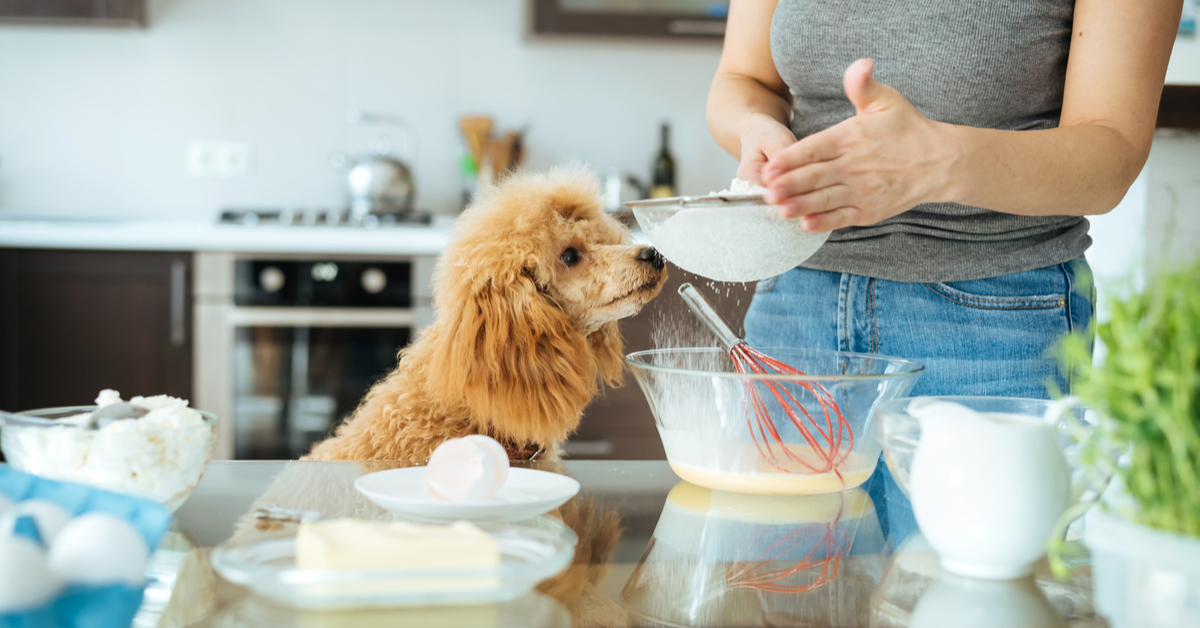
As mentioned, you can feed raw broccoli or cooked broccoli to your pooch, but it might be better to cook the broccoli. That makes it easier for them to swallow and eliminates some of the choking hazards, particularly from the broccoli stalks.
No matter how you prepare broccoli, you want to make sure you don’t use any seasonings that are common for human food. Some of these can cause health problems, so it’s better to leave any of those out.
Here are some tips for preparing broccoli to feed your dog:
Raw Broccoli
Remember to serve no more than 10 percent of your dog’s total caloric intake. The florets are more nutritious than the broccoli stalks, but no matter which parts you are feeding, be sure to cut them up into small pieces. Then, you can add them to your dog’s regular dog food.
Cooked Broccoli
You can cook both fresh and frozen broccoli for your dog. When cooking, you can prepare it much like you would for yourself. It can be steamed, roasted, or cooked, but just remember you don’t want to add any seasonings. You should also avoid oils and things like processed cheese or other additives.
In a Smoothie
This is another great way to prepare broccoli for your pooch. You can puree the broccoli in a blender with other ingredients like blueberries, green beans, cooked sweet potatoes, bananas, strawberries, or even watermelon. You can also add some fresh fruit juice as long as it doesn’t have the added sugar.
Yogurt is another acceptable addition for added nutrition. It’s also just fine to freeze your smoothie mixture in ice cube trays, and you can then use those ‘pupsicles’ for the occasional treat. This is particularly good on a hot day.
What Other Veggies are Good for Your Pooch?
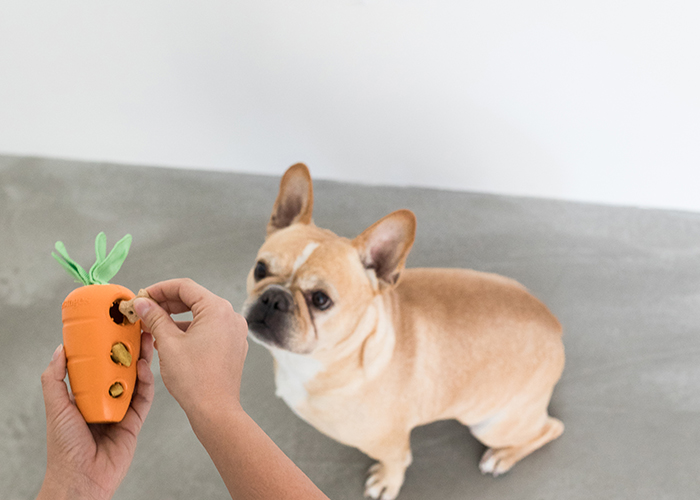
There are several other veggies you can feed your dog. Many of these have similar benefits to broccoli. Most are rich in vitamins and minerals, but as with broccoli, it’s good to stay at the 10 percent level to ensure they don’t get too much.
Here’s a list of vegetables that are safe for your dog to eat:
We’ve put together this list of the top 10 vegetables dogs can eat.
- Asparagus — You should cook the asparagus, but don’t add any seasonings. You should also trim off the toughest parts and be aware that this veggie causes smelly urine!
- Bell Peppers — Red peppers are the most nutritious. You can feed these raw or cooked, but probably the best way is to steam them. You shout NOT feed seeds, stems, or whole peppers.
- Carrots — Carrots are great for your dog, whether raw or cooked, but they are high in sugar so don’t feed too much. You should also be sure to thoroughly wash these, and any veggies, to remove any traces of pesticides or other chemicals applied in the field.
- Cauliflower — This is another cruciferous vegetable, and like broccoli, it should be fed only in moderation. You should also cook it to make it more digestible, and don’t feed the stems, whole flowers, or large chunks.
- Celery — Celery is moisture-rich and should only be given to dogs occasionally. It may cause your pooch to pee more frequently. Your best friend will also like it if you dip it in peanut butter.
- Cucumbers — Cucumbers are another moisture-rich vegetable, and unlike some of the others, you can feed this to your dog more often, even two or three times a week. They can, however, cause loose stools and frequent urination. Also, you should be aware that though cucumbers are safe, pickles are not. They are preserved with vinegar, salt, and other spices that can cause health problems for your pooch.
- Mushrooms — Your dog can eat mushrooms, but just like with people, you have to be very careful. To be safe, you should only feed your dog store-bought mushrooms, specifically Portobellos, white buttons, cremini, shitake, porcini, reishi, and maitake. Always cook them, and don’t let your dog eat wild mushrooms. If he does, contact your vet or the ASPCA’s animal poison control center immediately. Signs of mushroom poisoning include excessive salivation and urination, vomiting, and extreme tear production. Without help, your dog could also have seizures, tremors, and fall into a comatose-like state of sedation.
- Potatoes — Potatoes can also be a safe and tasty treat for your dog, but they need to be prepared correctly. As with other veggies, you shouldn’t add any seasonings, but you should keep the skins on. Bake or boil them — this is critical since raw potatoes contain a toxic chemical that can be dangerous for your dog. You also want to slice them into bite-size pieces to avoid any choking hazard.
- Tomatoes — Tomatoes are a safe, healthy treat for your dog, but you should remove the stems and leaves as these can be harmful to your dog. Also, you should feed them raw, cut them into small pieces, and don’t feed tomato sauce to your dog unless it is onion and garlic-free.
Broc on
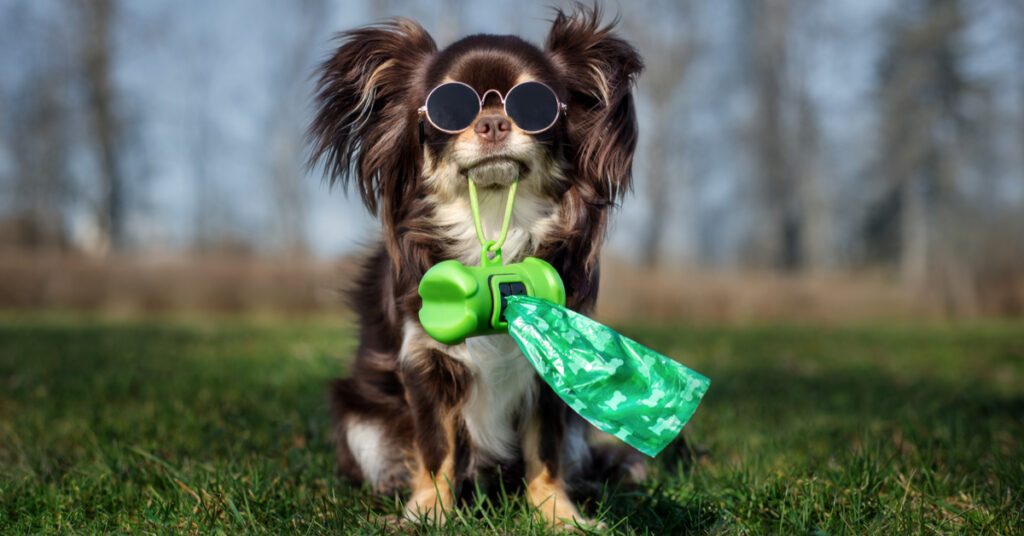
Unlike cats, dogs get benefit from eating some vegetables and fruits, but you want to make sure you choose the right ones and prepare them correctly.
Broccoli can be very healthy for your pet, just as it is for humans, but you don’t want to feed more than 10 percent of your dog’s total caloric intake and you want to make sure to prepare it so there won’t be any health problems.
Once you’ve done that, you and your dog can both sit down and do what your mother always said — “Eat your broccoli!”

